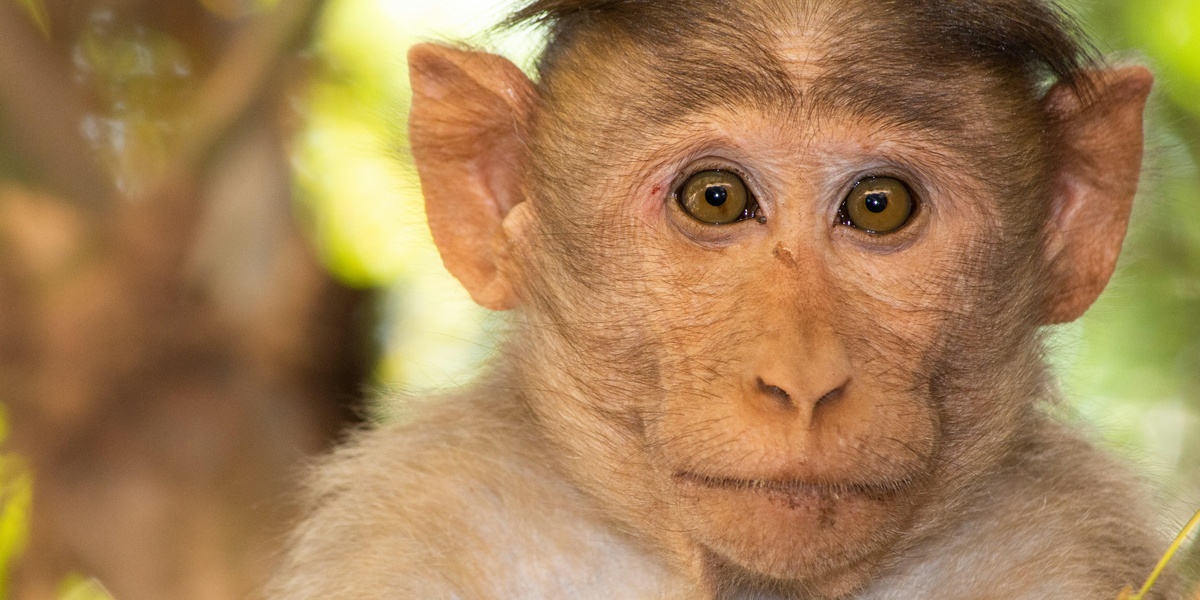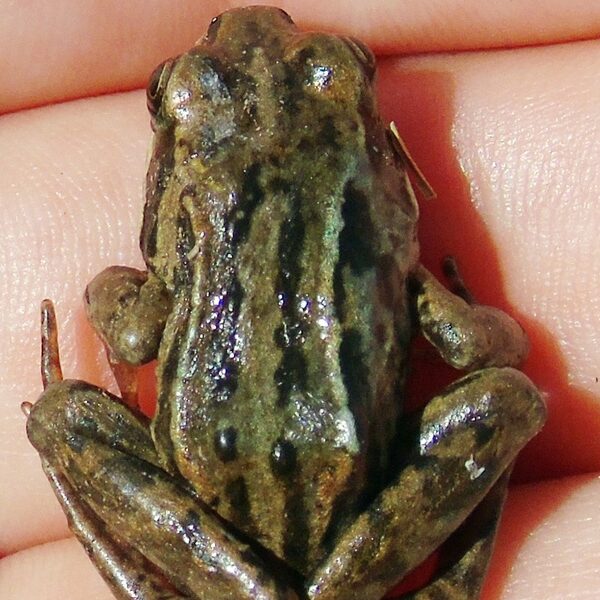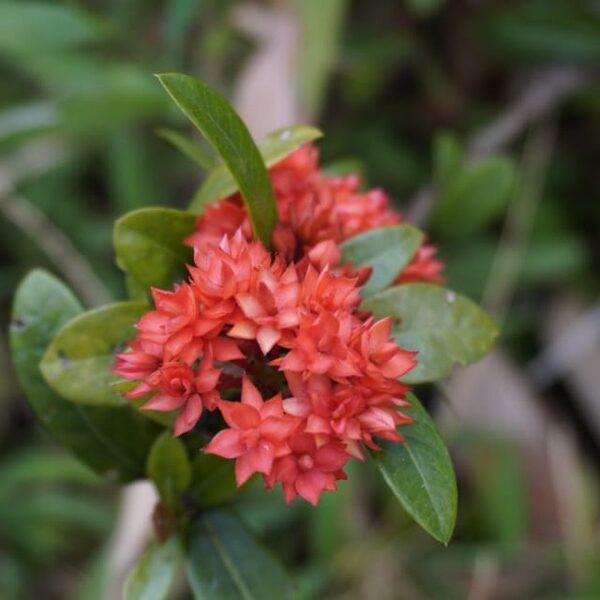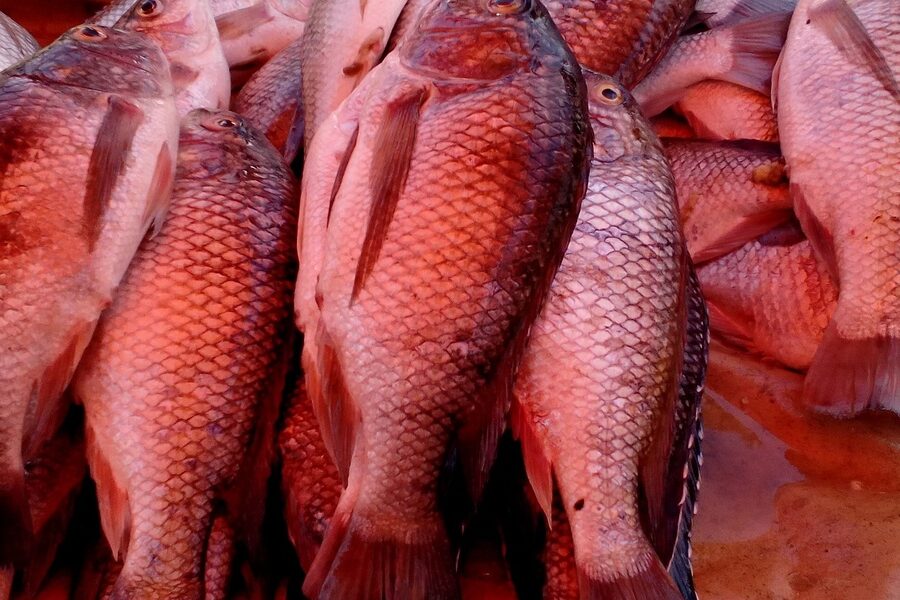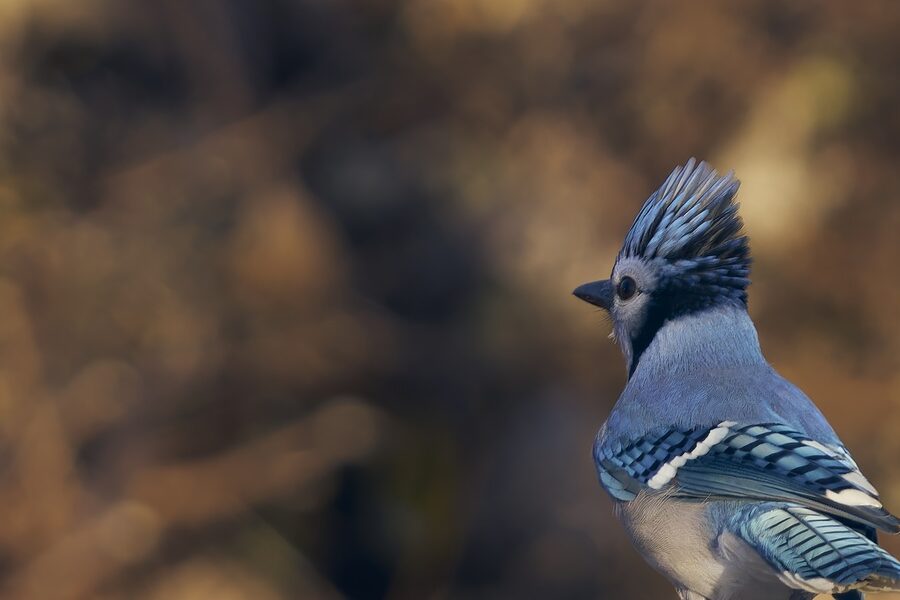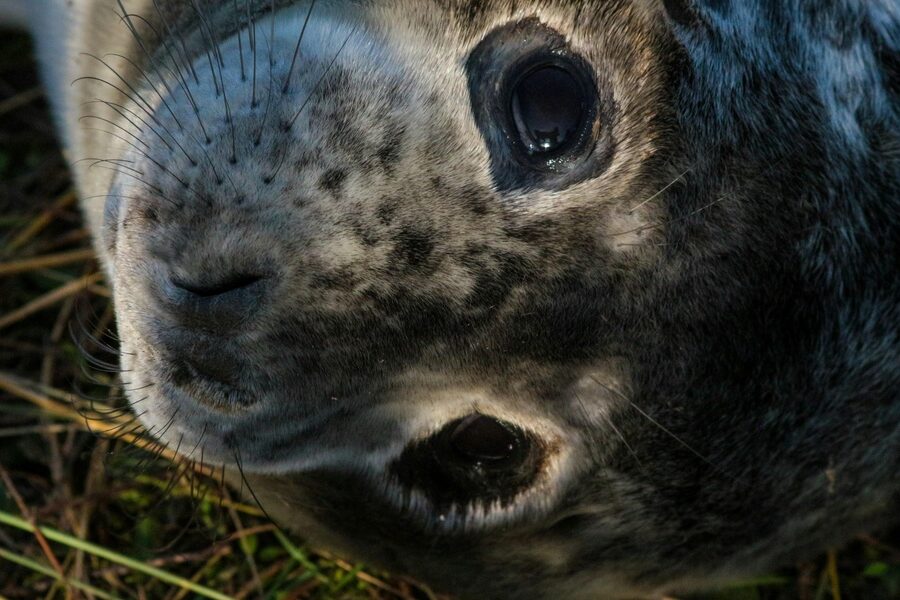Panama, a narrow land bridge connecting two vast continents, boasts an unparalleled wealth of biodiversity. Its unique geographical position and diverse ecosystems, from dense rainforests to two coastlines, make it a true haven for an astonishing array of wildlife. This vibrant country is a prime destination for anyone eager to explore the natural world.
To guide you through this incredible fauna, we’ve compiled a comprehensive guide. There are exactly 40 Animals of Panama listed here, ranging from the formidable American crocodile to the charismatic White-faced capuchin. For each, you’ll find below key information, including its Scientific Name, Habitat, Conservation Status, and Average Length (m).
What makes Panama such a biodiversity hotspot?
Panama’s exceptional biodiversity stems primarily from its role as a land bridge connecting North and South America. This unique position allows species from both continents to converge, creating a highly diverse mix of flora and fauna. Coupled with varied microclimates, high rainfall, and a range of ecosystems from cloud forests to coral reefs, the country supports an incredible variety of life within a relatively small area.
Are there any unique or endemic animals found only in Panama?
Yes, Panama is home to several endemic species, meaning they are found nowhere else in the world. While our list features many widely distributed species, the country is particularly known for specific amphibians and reptiles, like certain poison dart frogs and some snake species, as well as unique bird subspecies adapted to its diverse habitats. These endemic creatures highlight the country’s distinct evolutionary history and ecological significance.
Animals of Panama
| Common Name | Scientific Name | Habitat | Conservation Status | Average Length (m) |
|---|---|---|---|---|
| Jaguar | Panthera onca | Lowland rainforest, mangroves, wetlands | Near Threatened | 1.80 |
| Ocelot | Leopardus pardalis | Tropical forests, scrub, wetlands | Least Concern | 0.90 |
| Margay | Leopardus wiedii | Canopy forests, cloud forests | Near Threatened | 0.70 |
| Baird’s tapir | Tapirus bairdii | Lowland rainforest, riparian forests | Endangered | 2.00 |
| Hoffmann’s two-toed sloth | Choloepus hoffmanni | Lowland and montane forests | Least Concern | 0.60 |
| Brown-throated three-toed sloth | Bradypus variegatus | Rainforest canopy, secondary forest | Least Concern | 0.50 |
| Geoffroy’s spider monkey | Ateles geoffroyi | Primary tropical forest, canopy | Endangered | 1.40 |
| White-faced capuchin | Cebus imitator | Forest edges, mangroves, secondary forest | Least Concern | 0.90 |
| Mantled howler monkey | Alouatta palliata | Lowland and foothill forests | Least Concern | 0.90 |
| Central American squirrel monkey | Saimiri oerstedii | Pacific lowland forest fragments | Endangered | 0.60 |
| Kinkajou | Potos flavus | Rainforest canopy and edges | Least Concern | 0.60 |
| Tayra | Eira barbara | Lowland to montane forests, edges | Least Concern | 0.70 |
| Central American agouti | Dasyprocta punctata | Forest floor, savanna edges | Least Concern | 0.50 |
| Lowland paca | Cuniculus paca | Dense rainforest, riverbanks | Least Concern | 0.60 |
| Neotropical river otter | Lontra longicaudis | Rivers, mangroves, estuaries | Near Threatened | 1.20 |
| Harpy eagle | Harpia harpyja | Mature lowland rainforests | Near Threatened | 1.00 |
| Resplendent quetzal | Pharomachrus mocinno | Cloud forest, montane forests | Near Threatened | 0.50 |
| Scarlet macaw | Ara macao | Lowland rainforest, riverine forest | Least Concern | 0.90 |
| Great green macaw | Ara ambiguus | Lowland forest, gallery forest | Endangered | 0.90 |
| Keel-billed toucan | Ramphastos sulfuratus | Lowland and foothill forests | Least Concern | 0.55 |
| Jabiru | Jabiru mycteria | Wetlands, marshes, river lagoons | Least Concern | 1.30 |
| Panamanian golden frog | Atelopus zeteki | Mountain streams, forested slopes | Critically Endangered | 0.06 |
| Strawberry poison-dart frog | Oophaga pumilio | Lowland rainforest, leaf litter | Least Concern | 0.03 |
| Glass frog | Hyalinobatrachium fleischmanni | Riparian vegetation, cloud forest streams | Least Concern | 0.03 |
| American crocodile | Crocodylus acutus | Coastal estuaries, river mouths, mangroves | Vulnerable | 3.50 |
| Spectacled caiman | Caiman crocodilus | Freshwater rivers, lagoons, swamps | Least Concern | 1.50 |
| Boa constrictor | Boa constrictor | Rainforest, dry forest, agricultural edges | Least Concern | 2.50 |
| Eyelash viper | Bothriechis schlegelii | Cloud forest, lowland forest understory | Least Concern | 0.60 |
| Green iguana | Iguana iguana | Canopy, riverbanks, urban green areas | Least Concern | 1.20 |
| Collared peccary | Pecari tajacu | Dry forest, secondary growth, savanna edges | Least Concern | 0.80 |
| Green sea turtle | Chelonia mydas | Coral reefs, seagrass beds, nesting beaches | Endangered | 1.00 |
| Hawksbill turtle | Eretmochelys imbricata | Coral reefs, rocky shores, nesting beaches | Critically Endangered | 0.80 |
| Leatherback turtle | Dermochelys coriacea | Open ocean, nesting beaches | Vulnerable | 1.80 |
| Bottlenose dolphin | Tursiops truncatus | Coastal waters, bays, estuaries | Least Concern | 2.50 |
| West Indian manatee | Trichechus manatus | Coastal lagoons, river estuaries | Vulnerable | 3.00 |
| Blue morpho butterfly | Morpho peleides | Lowland rainforest, river edges | Not Evaluated | 0.12 |
| Bullet ant | Paraponera clavata | Lowland rainforest, humid tropical forest | Not Evaluated | 0.03 |
| Leafcutter ant | Atta cephalotes | Forest floor, clearings, disturbed areas | Not Evaluated | 0.02 |
| Stoplight parrotfish | Sparisoma viride | Coral reefs, rocky reefs, lagoon reefs | Least Concern | 0.50 |
| Magnificent frigatebird | Fregata magnificens | Coastal mangroves, islands, estuaries | Least Concern | 0.90 |
Images and Descriptions
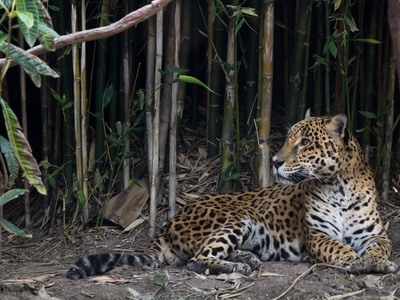
Jaguar
Panama’s largest cat, powerful and secretive, roams forests and river corridors. A top predator, important for ecosystem balance and often elusive but occasionally seen in protected parks and remote areas.
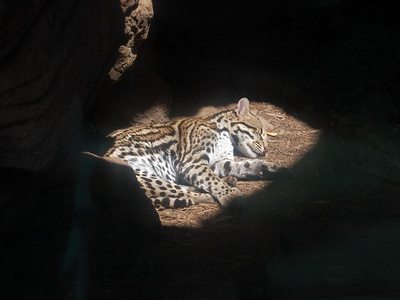
Ocelot
A medium-sized, beautifully patterned nocturnal cat with rosettes and streaks. Ocelots hunt small mammals and birds and thrive in varied habitats, often near water, making them a familiar wild feline in Panama.
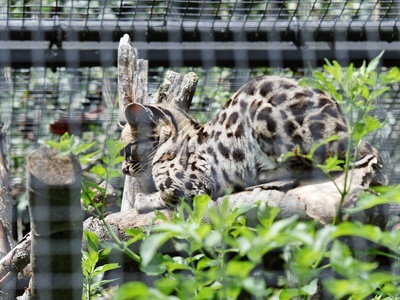
Margay
A small, arboreal spotted cat built for tree life with long tail and flexible ankles. Margays hunt birds and small mammals high in the canopy and are masters of stealth in forest habitats.
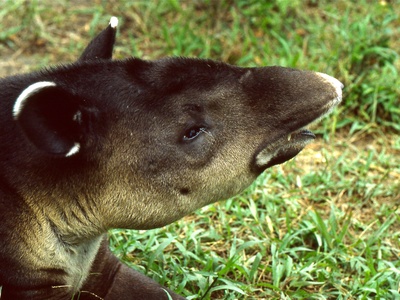
Baird’s tapir
A large, hoofed mammal with a distinctive short proboscis that feeds on fruits and vegetation. Tapirs are important seed dispersers but are threatened by hunting and habitat loss across Panama.
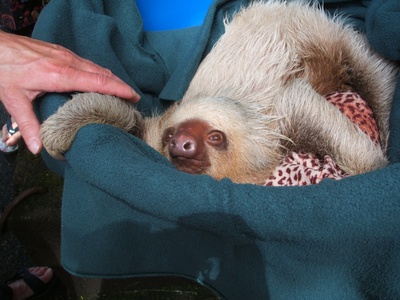
Hoffmann’s two-toed sloth
A slow-moving, nocturnal sloth with two toes on its forelimbs, coarse fur and algae-tinted coat. It hangs in the canopy, feeding on leaves and sleeping long hours, blending into forest life.
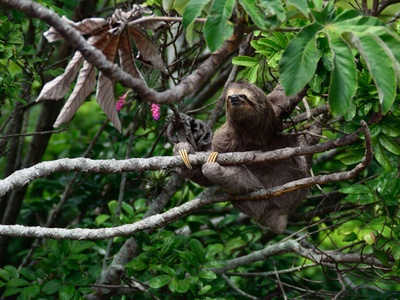
Brown-throated three-toed sloth
A common Panama sloth with a distinctive three-toed grip and a gentle, slow lifestyle. Often seen hanging from branches, it plays a role in canopy ecology and supports diverse microfauna.
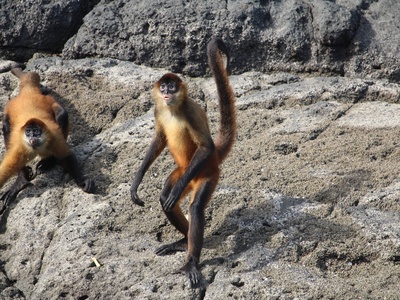
Geoffroy’s spider monkey
A long-limbed, long-tailed primate with remarkable agility that swings through the canopy in social groups. Spider monkeys are key seed dispersers but face threats from hunting and fragmentation.
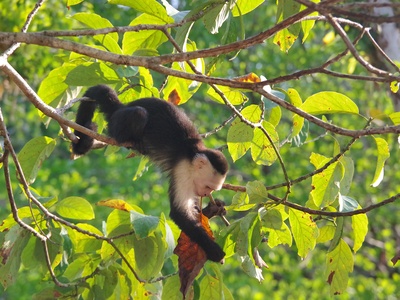
White-faced capuchin
An intelligent, expressive monkey often seen in troops. Capuchins use tools, forage widely, and are familiar to visitors in many Panamanian parks, playing major roles in seed dispersal and forest dynamics.
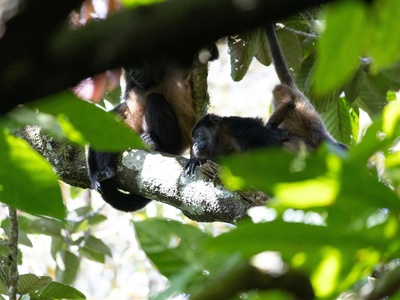
Mantled howler monkey
Famous for deep, resonant calls heard across forests, howlers are folivores that move slowly. Their vocalizations help maintain spacing between groups and are a hallmark of Panama’s rainforest soundscape.
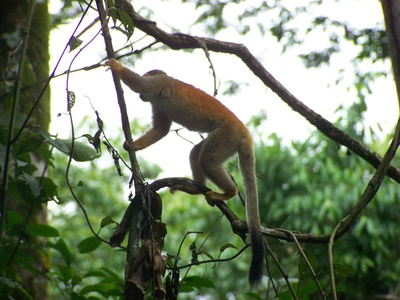
Central American squirrel monkey
A small, lively monkey with bright eyes and social troops. Found in limited Pacific woodlands, squirrel monkeys forage for insects and fruits and are vulnerable due to habitat loss.

Kinkajou
A nocturnal, tree-dwelling mammal with a prehensile tail and curious face, the kinkajou eats fruit and nectar. Often called “honey bear,” it is a playful presence in Panama’s night forests.
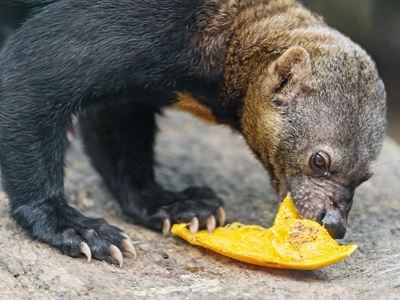
Tayra
A sleek, omnivorous mustelid that forages for fruits, small mammals, and eggs. Tayras are active daytime hunters and climbers, exploring forest edges and secondary growth.
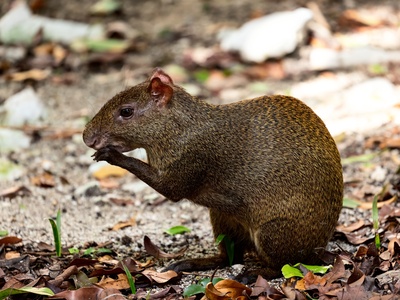
Central American agouti
A compact, brown rodent that nibbles fruits and caches seeds, aiding forest regeneration. Agoutis are common in Panama and often seen near trails and forest clearings.
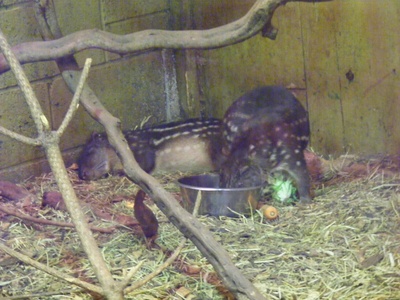
Lowland paca
A chunky, nocturnal rodent with spotted flanks that forages for fruits and tubers. Pacas are good swimmers and are often detected by their distinctive calls at night.

Neotropical river otter
An agile, fish-eating carnivore that patrols freshwater and coastal waters. River otters are playful swimmers important to aquatic ecosystem health but face habitat and pollution pressures.
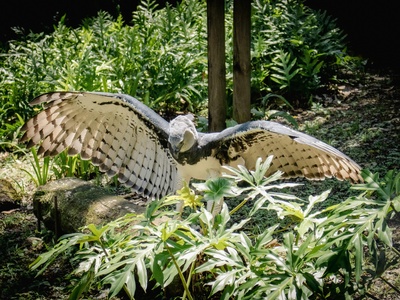
Harpy eagle
One of the world’s most powerful raptors with striking black-and-white plumage and massive talons. Harpy eagles hunt monkeys and sloths and require large tracts of intact forest to thrive.
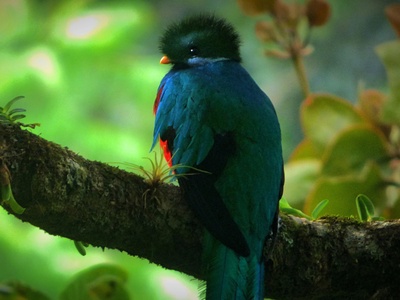
Resplendent quetzal
A luminous, short-bodied bird with dazzling green plumage and long tail streamers in males. The quetzal inhabits cool cloud forests and is deeply symbolic across Central America.
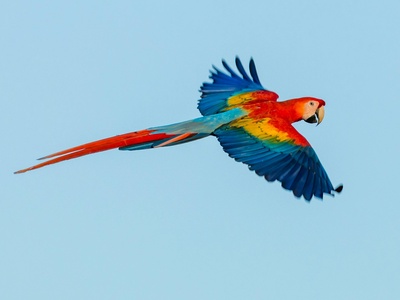
Scarlet macaw
A loud, brilliant red parrot with blue and yellow wings, often seen in flocks along rivers and in canopy gaps. Scarlet macaws feed on fruits and nuts and are a charismatic sight.
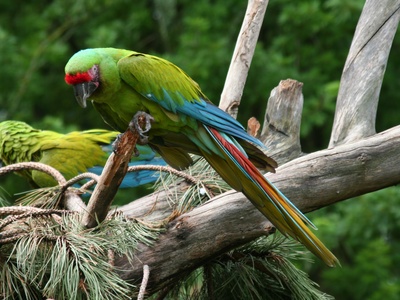
Great green macaw
A large, mostly green parrot with a powerful bill and strong dependence on large trees for nesting. Threatened by habitat loss, it remains an iconic but vulnerable forest species in Panama.
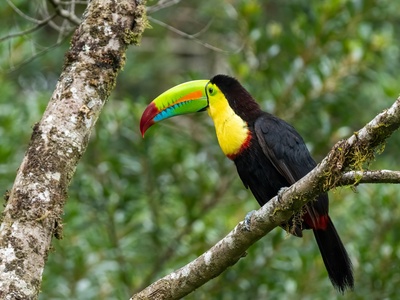
Keel-billed toucan
Famous for its colorful, oversized bill, the keel-billed toucan eats fruit and small prey. It nests in tree cavities and is a noisy, unmistakable presence in forested areas.
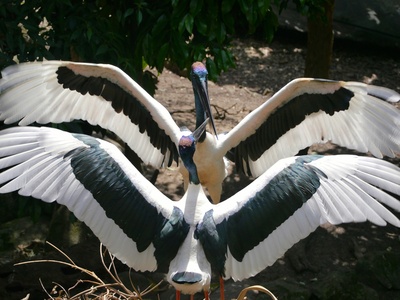
Jabiru
A tall, stately stork with a black neck and large bill seen wading in wetlands. Jabirus feed on fish and amphibians and are a dramatic sight in Panama’s marshes and floodplains.
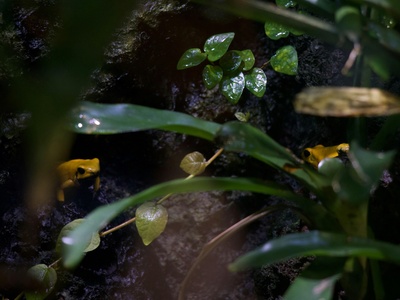
Panamanian golden frog
A small, vividly colored amphibian endemic to Panama, celebrated in culture and conservation. Once common, its wild populations collapsed from disease and habitat loss but remain a national symbol.
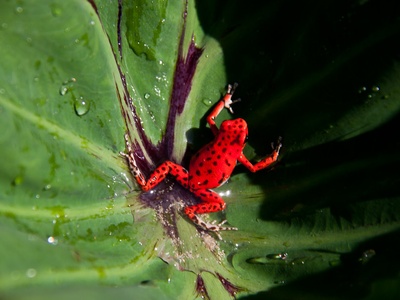
Strawberry poison-dart frog
A tiny, brightly colored frog common on humid forest floors. Males guard eggs and transport tadpoles; their vivid hues advertise toxicity and deter predators.
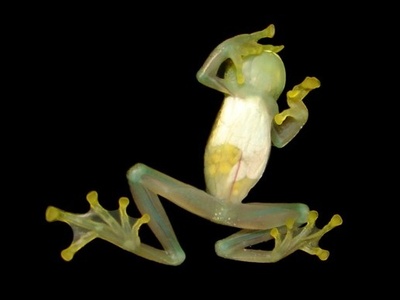
Glass frog
Delicate green frogs with translucent belly skin, often found on leaves overhanging streams. Glass frogs lay eggs above water and their transparent undersides reveal internal organs.
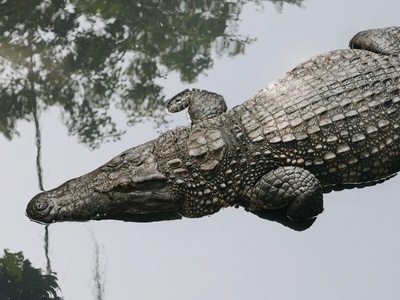
American crocodile
A large coastal predator inhabiting mangroves and estuaries on both Caribbean and Pacific coasts. These crocodiles are impressive, wary, and important apex predators in Panama’s waterways.
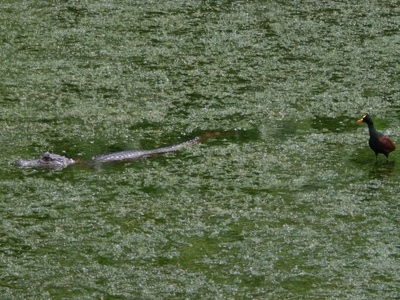
Spectacled caiman
A widespread small crocodilian with distinctive facial markings. Spectacled caimans inhabit slow-moving freshwater and are adaptable, often seen in protected wetlands and lowland ponds.
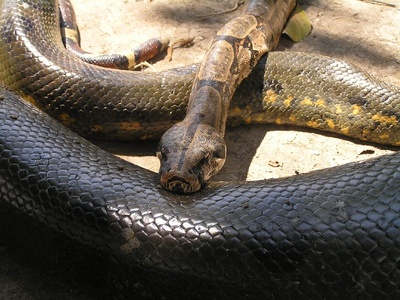
Boa constrictor
A heavy-bodied, nonvenomous snake that kills by constriction. Boas are ambush predators of mammals and birds and inhabit varied habitats across Panama, from lowland forests to disturbed areas.
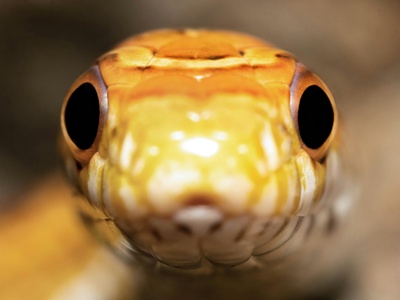
Eyelash viper
A small, venomous arboreal viper with horn-like scales over the eyes and striking color variations. Eyelash vipers ambush frogs and small birds from vegetation in humid forests.
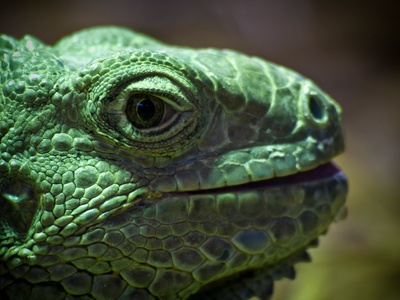
Green iguana
A large, herbivorous lizard often seen basking on branches or walls. Green iguanas eat leaves and fruits and adapt well to disturbed habitats, including parks and gardens.
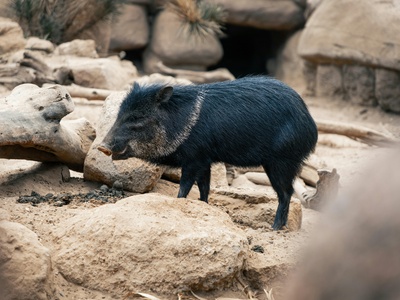
Collared peccary
A pig-like ungulate that travels in social herds, rooting for roots and fruit. Collared peccaries are common across varied habitats and influence seed fate through foraging behavior.
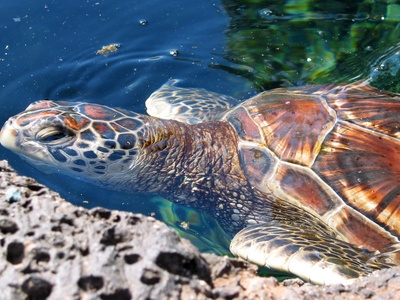
Green sea turtle
A large, herbivorous sea turtle that nests on Panamanian beaches and feeds on seagrasses and algae. Green turtles are key for coastal ecosystems and a focus of conservation efforts.
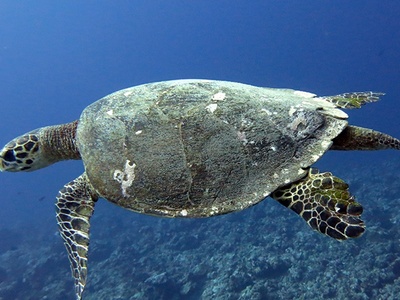
Hawksbill turtle
A small, beautifully patterned turtle specializing on sponges and reef habitats. Hawksbills nest on select beaches in Panama and are highly threatened by shell trade and habitat loss.
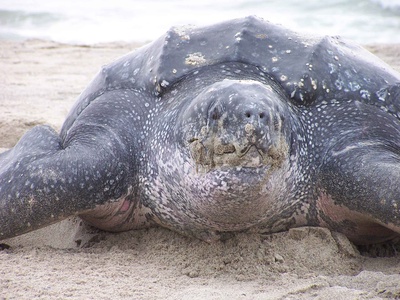
Leatherback turtle
The world’s largest turtle with a leathery shell, leatherbacks feed on jellyfish and travel vast distances. They nest on Panamanian coasts and are vulnerable from fishing bycatch and beach disturbance.
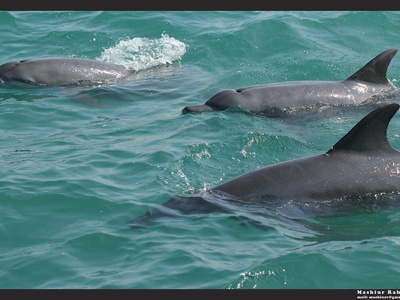
Bottlenose dolphin
A familiar, intelligent marine mammal seen near Panama’s shores, performing acrobatic leaps. Bottlenose dolphins form social pods and are important predators in coastal food webs.
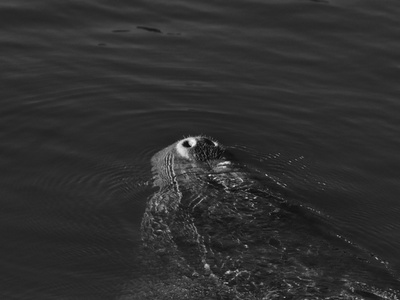
West Indian manatee
A gentle, slow-moving herbivore that grazes on seagrasses in calm shallow waters. Manatees are culturally and ecologically important but vulnerable to boat strikes and habitat loss.
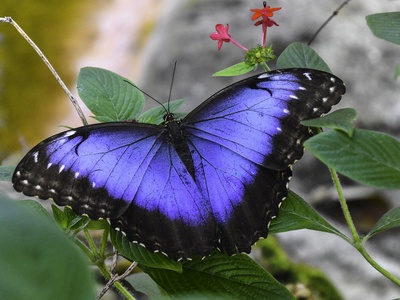
Blue morpho butterfly
A large, iridescent blue butterfly that flashes through the understory and sunlit gaps. Blue morphos are a favorite for nature-watchers and pollinate various tropical plants.
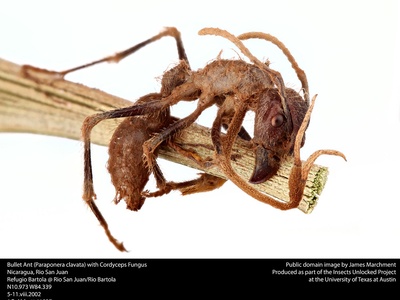
Bullet ant
A large, potent-stinging ant famous for its painful bite. Bullet ants forage on the forest floor and trees, playing roles in nutrient cycling and tropical food webs.
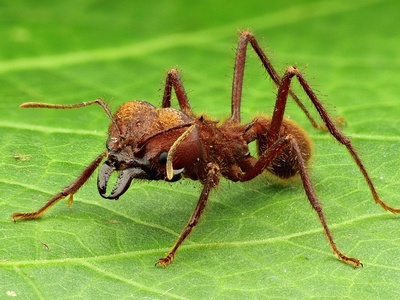
Leafcutter ant
Remarkable fungus-farming ants that cut leaves to cultivate fungal gardens. Highly visible in Panama’s forests, they shape vegetation patterns and are ecological engineers.
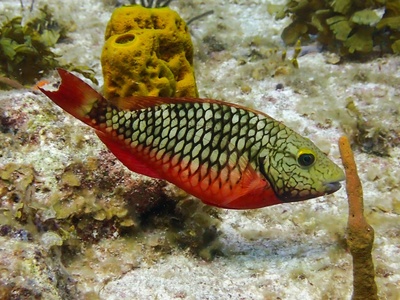
Stoplight parrotfish
A colorful herbivorous fish that scrapes algae and coral, producing sand. Parrotfish are vital reef engineers, helping maintain coral health in Panama’s coastal marine ecosystems.
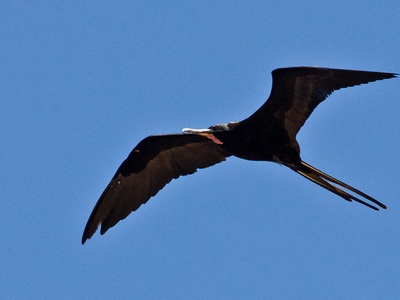
Magnificent frigatebird
A slender, long-winged seabird noted for soaring and kleptoparasitic feeding. Males display red gular sacs; frigatebirds nest on coastal islands and are a constant presence along Panama’s shores.
